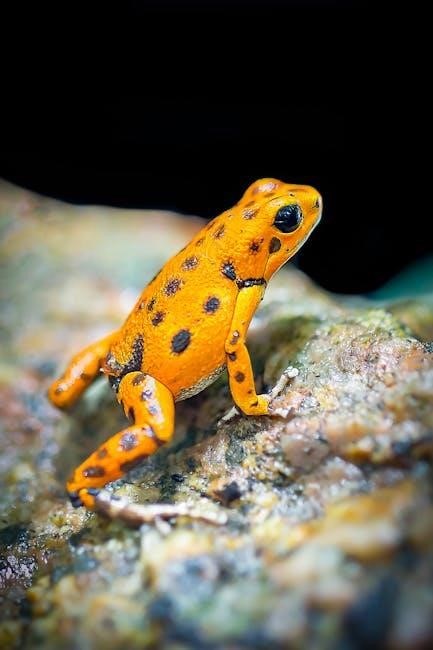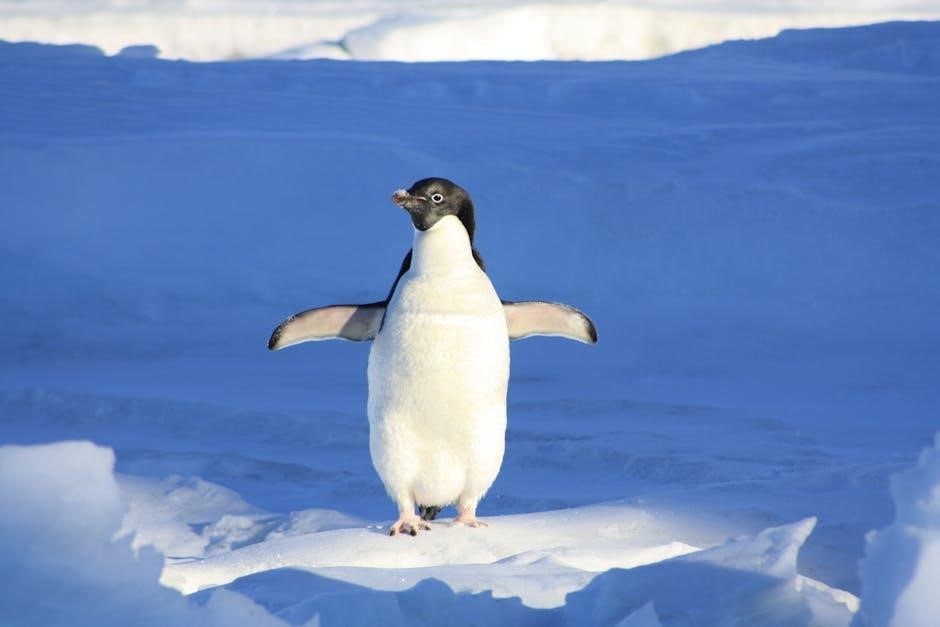and online resources effectively always.
Definition and Scope
Conservation biology is defined as the study of Earth’s biological diversity and the factors influencing it, with an emphasis on ecological principles and human impacts, as outlined in introduction to conservation biology pdf notes. This field of study encompasses various aspects, including the goals of wildlife management programs, which aim to protect endangered species and conserve populations. The scope of conservation biology is vast, covering topics such as the value of biodiversity, threats to biodiversity, and conservation strategies. According to online resources, conservation biology notes are available for free download as Word Doc, PDF File, or Text File, providing valuable information on the subject. These notes discuss the importance of conservation biology and its application in real-world scenarios, making it an essential tool for students and researchers alike. By understanding the definition and scope of conservation biology, individuals can better appreciate the importance of preserving Earth’s biological diversity.
Importance of Biodiversity
The importance of biodiversity is a crucial aspect of conservation biology, as it underlies the health and resilience of ecosystems, according to introduction to conservation biology pdf notes. Biodiversity provides various benefits, including ecosystem services, such as air and water purification, soil formation, and climate regulation. Additionally, biodiversity is essential for human well-being, as it supplies food, fiber, and medicine, and supports recreational and tourism activities. The value of biodiversity is also recognized in terms of its intrinsic value, with many species and ecosystems possessing unique characteristics and features. Online resources, such as conservation biology notes, emphasize the significance of preserving biodiversity, as it is essential for maintaining ecosystem function and promoting ecological sustainability. By understanding the importance of biodiversity, individuals can appreciate the need to conserve and protect Earth’s natural resources, and make informed decisions about conservation efforts and sustainable practices.

Key Concepts in Conservation Biology
Conservation biology concepts are studied using pdf notes and online resources to understand ecological principles effectively always online now.
Threats to Biodiversity
Threats to biodiversity are a major concern in conservation biology, and can be studied using online resources such as pdf notes and other materials. These threats include habitat destruction, climate change, and pollution, which can have devastating effects on ecosystems and species. The loss of biodiversity can have serious consequences, including the disruption of food chains and the loss of ecosystem services. Conservation efforts are necessary to mitigate these threats and protect biodiversity. By understanding the causes and effects of threats to biodiversity, conservation biologists can develop effective strategies to conserve and manage ecosystems. This knowledge is essential for protecting the natural world and preserving the health of our planet. Conservation biology notes and other resources provide valuable information on this topic, and can be used to inform conservation efforts and promote sustainability. Effective conservation requires a comprehensive understanding of the threats to biodiversity.
Conservation Strategies
Conservation strategies are essential for protecting biodiversity and ecosystems, and can be informed by pdf notes and other online resources. These strategies include the establishment of protected areas, such as national parks and wildlife reserves, as well as efforts to restore degraded habitats and promote sustainable land use. Conservation biologists also work to develop effective management plans for species and ecosystems, and to engage local communities in conservation efforts. Additionally, conservation strategies may involve the use of ecological restoration techniques, such as the reintroduction of native species and the removal of invasive species. By using a combination of these strategies, conservation biologists can work to protect and preserve biodiversity, and to promote the health and resilience of ecosystems. Effective conservation strategies require a thorough understanding of the complex relationships between species and their environments, and can be developed using a range of tools and techniques.

Conservation Biology in Practice
Conservation biology is applied through pdf notes and real-world projects effectively, always using ecological principles and human impacts considerations.

Protected Areas and Restoration Ecology
Protected areas are essential for conservation biology, involving the preservation of ecosystems and biodiversity through pdf notes and online resources. Restoration ecology is also crucial, focusing on the recovery of degraded or damaged ecosystems. This approach aims to reestablish the natural balance and functionality of ecosystems, promoting the conservation of species and their habitats. By studying conservation biology notes, individuals can gain a deeper understanding of the importance of protected areas and restoration ecology in maintaining ecological integrity. The application of ecological principles and human impacts considerations is vital in these efforts, ensuring the effective management and conservation of protected areas and the successful restoration of ecosystems. Through the combination of protected areas and restoration ecology, conservation biologists can work towards sustaining ecosystems and landscapes, ultimately contributing to the preservation of biodiversity and ecological health.
Government Bodies and Natural Resource Management
Government bodies play a crucial role in natural resource management, overseeing the conservation and utilization of resources such as water, land, and minerals. According to conservation biology pdf notes, these bodies establish policies and regulations to ensure the sustainable management of natural resources. Effective natural resource management involves balancing human needs with environmental concerns, requiring the application of ecological principles and conservation biology concepts. Government agencies, such as the environmental protection agency, work to implement and enforce laws and regulations related to conservation and resource management. By studying introduction to conservation biology notes, individuals can gain insight into the importance of government bodies in natural resource management and the impact of their decisions on the environment. This understanding is essential for developing effective conservation strategies and promoting sustainable resource management practices. Government bodies must prioritize conservation and sustainability to ensure the long-term health of ecosystems and the planet.

Challenges and Applications
Conservation biology faces challenges, applying ecological principles through pdf notes and online resources effectively always in practice and research studies and projects always.
Ecological Principles and Human Impacts
Ecological principles play a crucial role in understanding human impacts on the environment, and conservation biology pdf notes provide valuable insights into these complex relationships. Through the study of ecological principles, researchers can better understand the effects of human activities on ecosystems and biodiversity. The application of ecological principles in conservation biology is essential for developing effective strategies to mitigate human impacts and promote sustainability. By examining the relationships between human activities and ecological processes, conservation biologists can identify key areas for intervention and develop targeted conservation efforts. Additionally, the use of pdf notes and online resources can facilitate the dissemination of knowledge and promote collaboration among researchers and practitioners in the field of conservation biology, ultimately informing management decisions and policy development. Effective conservation requires a deep understanding of ecological principles and human impacts, and conservation biology pdf notes are an important tool in this endeavor.
Conservation Priority and Ecosystems
Conservation priority is often determined by the level of threat to ecosystems and the potential for conservation efforts to make a positive impact. In the context of introduction to conservation biology pdf notes, ecosystems are considered a critical component of conservation efforts. The conservation of ecosystems is essential for maintaining biodiversity and ensuring the long-term health of the planet. By prioritizing conservation efforts at the ecosystem level, researchers and practitioners can develop effective strategies for protecting and restoring ecosystems. This approach involves considering the complex relationships between different species and their environments, as well as the potential impacts of human activities on ecosystems. Through the use of pdf notes and online resources, conservation biologists can stay up-to-date on the latest research and developments in the field, and make informed decisions about conservation priority and ecosystem management. Effective conservation of ecosystems requires a comprehensive understanding of ecological principles and conservation biology.







